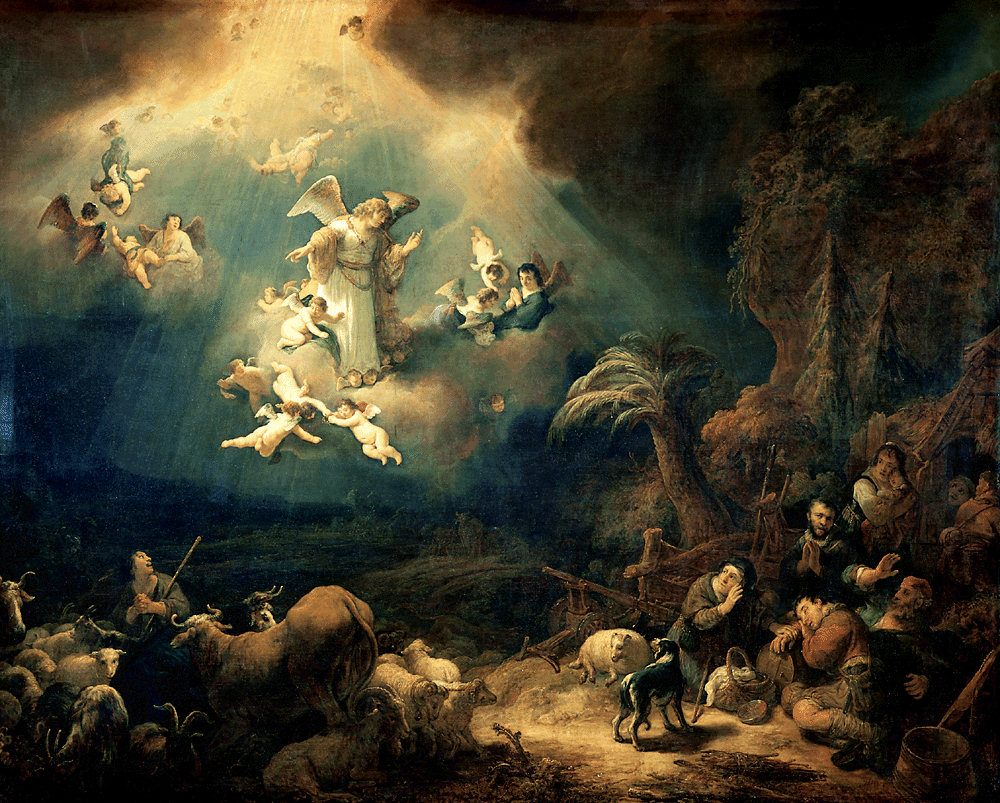
“Be not afraid; for behold, I bring you good news of a great joy which will come to all the people; for to you is born this day in the city of David a Savior, who is Christ the Lord. And this will be a sign for you: you will find a babe wrapped in swaddling cloths and lying in a manger.”
Sanctus, Sanctus, Sanctus Dominus Deus Sabaoth. Pleni sunt caeli et terra gloria tua. Hosanna in excelsis. Benedictus qui venit in nomine Domini. Hosanna in excelsis
“Behold, this child is set for the fall[d] and rising of many in Israel, and for a sign that is spoken against (and a sword will pierce through your own soul also), that thoughts out of many hearts may be revealed.”
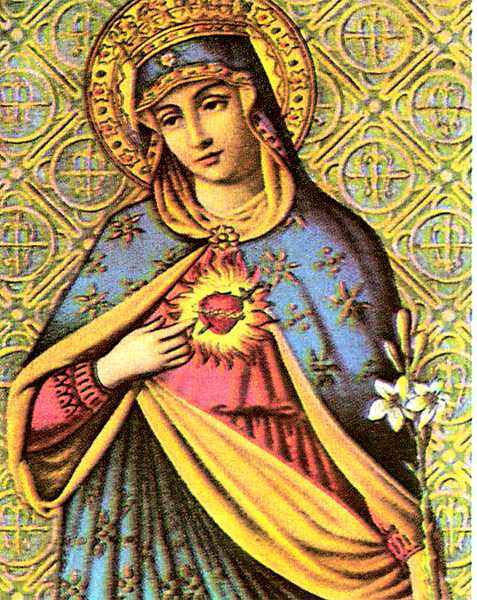
I saw an angel beside me toward the left side, in bodily form. He was not very large, but small, very beautiful, his face so blazing with light that he seemed to be one of the very highest angels, who appear all on fire. They must be those they call Cherubim. I saw in his hands a long dart of gold, and at the end of the iron there seemed to me to be a little fire. This I thought he thrust through my heart several times, and that it reached my very entrails. As he withdrew it, I thought it brought them with it, and left me all burning with a great love of God. So great was the pain, that it made me give those moans; and so utter the sweetness that this sharpest of pains gave me, that there was no wanting it to stop, nor is there any contenting of the soul with less than God. –St. Teresa, ‘Life’

Adrift in a nebulous void, an abyss undefined by darkness, sensing the quality of light beyond, I am aroused by a sensation below. Slothfully, I identify myself in a lucid dream. Looking downward, viewing my naked body, I notice a chord emanating from my chest. A winding twining thing, comprised of two distinct strands bursting forward.
Exiting, originating from my heart, the chord is constantly drawn from my body. The force pulling the chord is consistent and firm. It does not move my body—the chord sliding forth while not pulling my body. Gliding outward, the distinct chord is apart from my body. It is something connected, yet detached; similar to a magician pulling a seemingly endless napkin from his pocket.
Visually, I follow the chord to its source, discovering two beings pulling forth. Their form is that of humans, however, their appearance is shrouded by a mysterious cloud of illusion. I notice wings, tiny bodies: cherubs a playing, filled with joy, laughing and singing. I can not clearly focus upon the sweet tiny angels. They swim in and out of focus. I am able to distinguish both cherubs are absorbed in the effort of pulling at the chord, or rather pulling at individual ends. The twining strands couple to form the single chord passing from my heart.
At the point of contact with my flesh, the mystical chord creates friction, igniting a burning sensation throughout my body. Energy exchanged. Fear erupts. I panic, fighting against the heavenly exterior efforts. Opposition ingrained, I reach out to grasp the chord in order to strengthen my resistance. As I grab the chord, my perspective suddenly changes, my consciousness exiting my body. I am now able to perceive, simultaneously, from the opposite originating points. I am looking back at myself, the pulling cherubs now my two eyes, two eyes seeing as one. I watch my body struggle as I sustain the effort of drawing the chord outward, from my current perspective inward.
Incredibly, my emotional state achieves an abnormally peaceful state with my change of perception. The tension of my physical body assuaged. I acknowledged the serene state of being as a hand holding a dagger extends outward from my current position. The singular hand is huge in perception. Unemotionally, I realize the intention of the dagger. A driving force plunges the dagger directly into my heart. The moment the dagger penetrates my flesh, my perspective snaps back to my body.
An emotional upheaval erupts. I am pierced, overwhelmed, finding it difficult due to the flooding of thoughts. Anxiety forces the desire to move. Deluged with fear, hysterical with the thought of death, I cry out to the surrounding emptiness.
Remarkably, I am stunned by an incredible lack of sensation within the overwhelming. The dagger does not pierce inflicting pain, rather it soothes, gratifies, burning with an extreme coldness, cauterizing. My chest is an infected, seriously abscessed wound now being relieved of its painful pressure. The supernatural relaxing sensation comforts, causing a complete inner collapse, or is it possibly a return to a natural unknown state? All my muscles release. Miraculously, physical tension is eliminated. I am shocked by the feeling of complete release. I never realized there was so much tension existing within my body.
As the dagger settles deeper, blood begins to pour out and over my body. Striking the center of my heart, the dagger produces a thick stream of dark red, almost black blood. Bathing my body, the blood stimulates a primordial warmth, blanketing innate fear and ignorance. The profoundness of the act advances into a practical awareness. This must be done. The subtle thought of a womb never completely develops as it is overwhelmed by the image of a red orchid blossoming upon my open chest.
Slowly awakening, slothful and groggy, I emerge from the dream. Whispering. “Should have dug the dagger deeper.”
For the word of God is living and active, sharper than any two-edged sword, piercing to the division of soul and spirit, of joints and marrow, and discerning the thoughts and intentions of the heart.
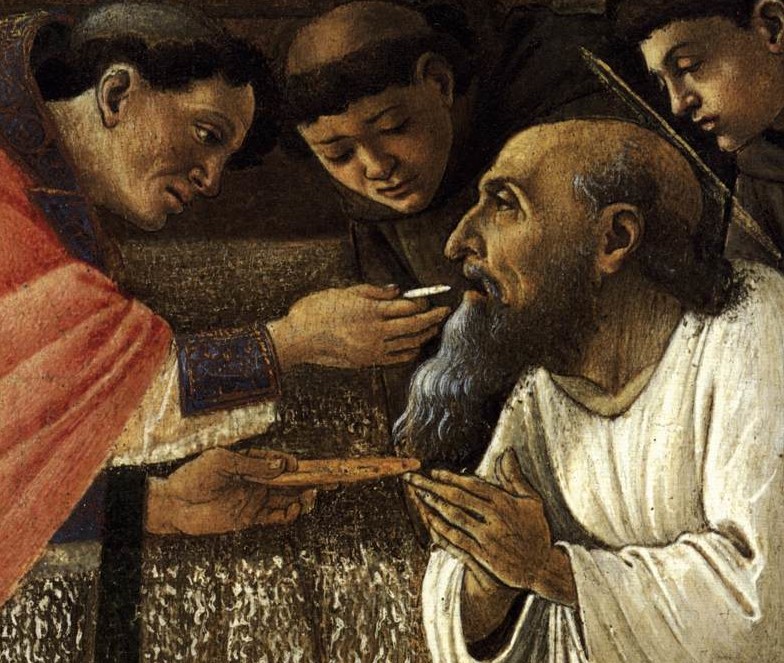
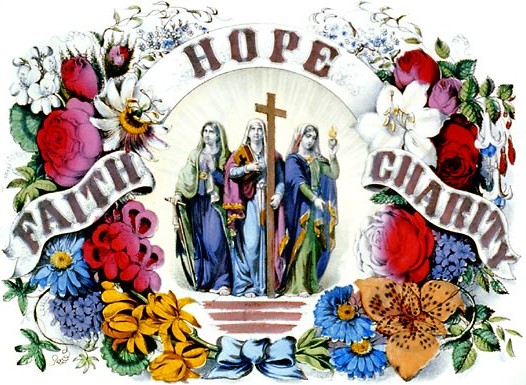

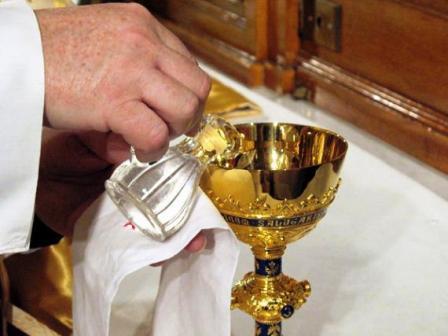




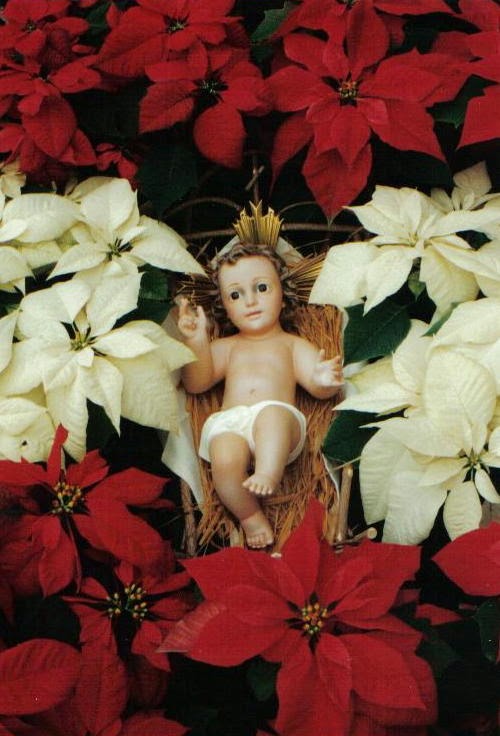
Recent Comments